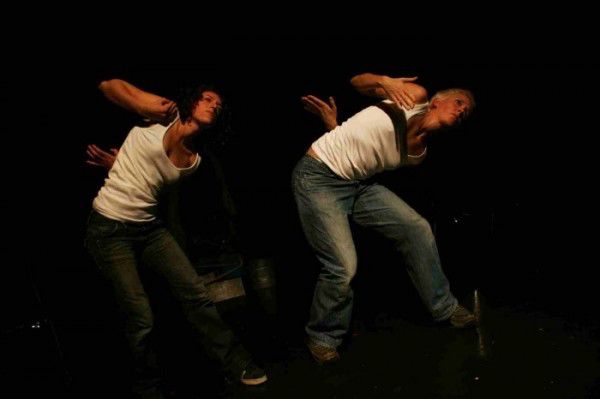REVIEW: TOMBOY BLUES – THE THEORY OF DISAPPOINTMENT AT PLYMOUTH BARBICAN
If this were a love story…Before we can decide if we are in love with someone else, we need to consider just how far we love ourselves. This is the journey that the actors in Tomboy Blues find themselves on in the Mars.tarrab production. Before they can truly address the distinct possibility that they are fallng in love with each other, they must reconcile their gender identities with their place in current culture. Both characters consider themselves tomboys – particularly in their youth. The passage of time has caused them to consider what initially made them that way and also to reconsider how appropriate that role is for them as they grow older.
 This struggle is represented on stage with a washing line of increasingly skimpy ladies panties which are replaced, during the show, with men’s white cotton Y-fronts as the two women consider just who are and who they want to be. The show’s subtitle, The Theory of Disappointment also plays into this exploration as they consider the “inevitability” of a unhappy ending to the affair. While one character embraces positivity and can see no reason why they can’t beat the odds and write their own perfect love story; the other is far more pessimistic, calling on the audience to consider if they are truly in love with their present partner and, if so, how many doomed romances have they gone through to get to this point in their lives…which we all know still may not necessarily be the happy ending we hope for.
This struggle is represented on stage with a washing line of increasingly skimpy ladies panties which are replaced, during the show, with men’s white cotton Y-fronts as the two women consider just who are and who they want to be. The show’s subtitle, The Theory of Disappointment also plays into this exploration as they consider the “inevitability” of a unhappy ending to the affair. While one character embraces positivity and can see no reason why they can’t beat the odds and write their own perfect love story; the other is far more pessimistic, calling on the audience to consider if they are truly in love with their present partner and, if so, how many doomed romances have they gone through to get to this point in their lives…which we all know still may not necessarily be the happy ending we hope for.
Tomboy Blues is a far more adult play than the marketing would lead you to believe. As an audience, we arrive expecting tales of dungaree wearing girls grazing their knees and trying to play football with the guys. There are certainly aspects of this but it is simply a starting point for these two remarkable women’s journeys. Talking to Rachel Mars and nat tarrab after the performance they explained how they wanted the piece to be more than just another queer play. They certainly succeeded in this, as this show is warm, funny, sad and, above all, human at the same time. However, a queer play is exactly what it is. Queer Theory is concerned with identity but in terms of critiquing those unwritten rules surrounding identities while further considering how far performance can create, maintain or change these identities. Tomboy Blues effortlessly achieves this. The audience is invited to watch those defining moments in both character’s lives as they consider not only who they believe themselves to be but also who they are told that they should be. At various stages, the scientific discourse is displayed by pseudo scientists (created by Rachel and nat in white coats) and considers that, while Tomboyism may be somewhat acceptable during childhood, if continued into later life, it may mark the subject as a far more “problematic” homosexual.
The girls try to do the “right” thing and don almost completely inappropriate dresses towards the show’s end but the audience can almost hear the sigh of relief when they realise just how far removed this is making them from who they truly are and so slip back into their jeans. The press release refers to Tomboy Blues as “a show for anyone who has ever wondered what it would be like if they weren’t what they are” and it certainly works on this level. However, it’s also a show for anyone who’s ever felt they didn’t quite fit . . . or who’ve ever worried at the prospect of falling in love . . . or out of love . . . or generally just wanted people to perceive them as acceptable members of society. As such, it becomes a show for everyone because we’ve all felt those emotions at one time or another. Tomboy Blues may or may not be a love story but it provides a representation of life that has some meaning for all of us. If you weren’t able to catch it at the Barbican Theatre, Plymouth as part of the Flourish season, a wider run is planned later in the summer so watch the website for further details: www.barbicantheatre.co.uk
Words: Alan Butler



